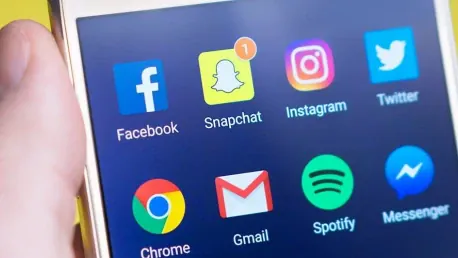Social media has become an integral part of our daily lives, influencing various sectors, including education. From primary schools to higher education institutions, the integration of social media platforms has transformed the way educators teach and students learn. The intersection of social media usage and educational settings presents a complex yet intriguing dynamic that continuously shapes the academic experience. The benefits include enhanced communication, increased student engagement, and a plethora of resources readily available at the fingertips of both educators and students. However, challenges such as distractions and privacy concerns remind us of the need for a balanced and strategic approach to integrating these digital tools into the learning environment.
Adoption of Social Media in Education
The adoption of social media in educational settings has been widespread, with a significant percentage of institutions and educators embracing these platforms for various purposes. In higher education, around 87% of institutions use social media to announce campus news and events. This demonstrates the pervasive reach and importance of social media in fostering a connected campus community. Beyond simple announcements, these platforms serve as portals for academic collaboration and student engagement. Approximately 65% of college teachers and about 70% of K-12 teachers utilize social media for teaching purposes, indicating its importance in both higher and lower educational tiers.
Social media platforms serve as tools for academic collaboration, with about 73% of students using them to team up with classmates on different devices. This collaborative nature of social media fosters a sense of community among students, enhancing their overall academic experience. Students can share ideas, resources, and feedback with ease, thus enriching the learning process. The ability to interact beyond the physical classroom breaks down geographical barriers and fosters a global learning environment. It is this sense of connectedness and shared purpose that makes social media an invaluable asset in modern education.
Impact on Teaching and Learning
Educators and students have reported positive effects of social media on academic performance and classroom engagement. Roughly 45% of educators believe that social media enhances students’ academic experiences, and nearly 45% of students claim it helps them learn better. The integration of social media into education also fosters communication between faculty and students, as indicated by 74% of teachers. These statistics emphasize the dual benefits of social media: it engages students in a familiar and interactive medium while also providing teachers with innovative tools to enhance their instructional methods.
The use of social media in the classroom has led to higher engagement levels, with students actively participating in discussions and activities. With platforms like Twitter, Facebook, and Instagram, educators can create dynamic classroom environments where learning extends beyond traditional lectures. Students often find themselves more motivated and involved in their learning process when they can interact with the material in a digital format. This increased engagement often translates to better academic performance, as students are more motivated and involved in their learning process. The immediacy and accessibility of social media also allow for real-time feedback and continuous learning, making education a more fluid and adaptive experience.
Professional Development and Collaboration
Social media is not only beneficial for students but also for educators. Many educators (77%) use social media for professional development and instruction. Platforms like LinkedIn and YouTube play pivotal roles in this regard, with around 76% of higher education faculties maintaining education-related YouTube channels. These platforms provide a space for educators to share tutorials, lectures, and other educational content that can be accessed by students and peers alike. The sharing of such resources fosters a collaborative learning environment and encourages the continuous improvement of teaching practices.
Educators use social media to share resources, collaborate with peers, and stay updated on the latest educational trends. The ability to join professional networks and participate in industry-specific groups enables teachers to gain insights and share best practices. This professional development aspect of social media helps educators enhance their teaching methods and improve their overall effectiveness in the classroom. By leveraging these platforms, educators can stay abreast of new teaching methodologies, technological advancements, and educational research, ultimately enriching their pedagogical skills and student outcomes.
Social Media in Primary Schools
While early education institutions are more cautious about integrating social media, a growing number of primary schools are adopting these platforms. About 40% of school teachers believe that integrating social media has positively affected students. Platforms like Facebook and Instagram are being used to share visual content and communicate school values to parents. These platforms provide an opportunity for schools to showcase activities, achievements, and updates, thus fostering a sense of community and transparency with parents.
In primary schools, social media is often used to enhance communication between teachers and parents, providing updates on school activities and student progress. This increased communication helps build a stronger school community and fosters a supportive learning environment for young students. Teachers can share classroom moments, homework assignments, and important announcements instantly, ensuring parents are always in the loop. This level of engagement not only supports student learning but also strengthens the partnership between home and school, creating a more holistic educational experience for young learners.
Social Media and Higher Education
In higher education, social media plays a crucial role in various aspects, from academic collaboration to student recruitment. Educational Pinterest boards have surged by 32%, and an estimated 50% of schools with social media accounts use them to engage students. LinkedIn has nearly 4 million registered users in the educational sector, highlighting its importance for professional networking and career development. This prevalence underscores the role of social media in forming professional connections and facilitating career advancement for both students and educators.
Social media also helps in recruiting students, with about 84% of admissions officers in the U.S. using it for this purpose. The ability to reach a wider audience and showcase the institution’s strengths makes social media an invaluable tool for higher education institutions. Prospective students can explore campus life, academic programs, and student testimonials through these platforms, aiding their decision-making process. The strategic use of social media in admissions and marketing not only attracts potential students but also builds a community that aligns with the institution’s values and culture.
College Students and Social Media
College students are among the most active users of social media, with virtually 91% of teachers using these platforms to communicate with students. More than 77% of college students feel that social media enhances their learning experience. Platforms like Instagram and Snapchat are significantly popular among college students, with around 71% using Instagram daily and nearly 30% using LinkedIn. These platforms serve as essential tools for both personal and academic communication, providing a seamless way for students to connect with peers and professors alike.
Social media serves as a primary communication tool among college students, facilitating collaboration on academic projects and fostering a sense of community. This increased connectivity helps students stay engaged and motivated throughout their academic journey. Group projects, study sessions, and club activities can be coordinated with ease, enhancing students’ cooperative learning experiences. Moreover, the ability to participate in academic discussions and access supplementary educational content through social media platforms can significantly deepen their understanding and retention of course material.
Educators’ Use of Social Media
Educators utilize social media for various professional purposes, including resource sharing and professional development. A survey revealed that 74% of educators prefer Pinterest for educational content, while Facebook remains a common platform for personal use. Despite the benefits, there is noticeable hesitation among educators regarding the extensive use of social media in schools, with 81% expressing concerns. This ambivalence highlights the need for a more balanced, well-regulated approach to ensure that the pedagogical advantages of social media are maximized while minimizing potential drawbacks.
The use of social media by educators helps them stay connected with peers, access valuable resources, and enhance their teaching methods. Teachers can join and contribute to educational forums, participate in webinars, and follow the latest trends in education technology. However, it is essential to address the concerns and challenges associated with social media to maximize its positive impact on education. Issues such as data privacy, screen time management, and the potential for misinformation must be actively managed to ensure a safe and productive educational environment for both students and educators.
Social Media Distractions in the Classroom
Despite the numerous benefits, social media can also be a significant distraction in the classroom. Heavy use of smartphones leads to a 25% decrease in rational capacity when phones are accessible. Nearly 75% of educators think social media distracts students, affecting their attention and ability during classes. These distractions not only hinder learning but also create a less focused and more fragmented classroom environment. The challenge lies in finding effective ways to integrate social media into educational settings while minimizing its potential to disrupt learning.
The constant urge to check social media accounts is a common distraction, with students touching their smartphones around 2617 times a day. This impulsive behavior can severely impact students’ ability to concentrate and engage meaningfully with classroom activities. To address this, educators can implement structured guidelines and digital literacy programs that teach students how to manage their social media use responsibly. By fostering an awareness of the potential pitfalls and emphasizing mindful usage, schools can harness the positive aspects of social media while mitigating its downsides.
Conclusion
Social media has become a significant part of our everyday lives, affecting various fields, including education. From elementary schools to universities, the integration of social media platforms has revolutionized the way teachers instruct and students absorb information. This intersection of social media use and educational environments creates a multifaceted yet fascinating dynamic that continually reshapes the academic experience. Some of the key advantages include improved communication between teachers and students, heightened student engagement, and the vast array of resources that are easily accessible to both groups. These platforms offer innovative ways to share knowledge, collaborate on projects, and provide real-time feedback. Additionally, social media can create a more inclusive learning environment by bridging gaps and allowing students from diverse backgrounds to connect and share perspectives. Nonetheless, the inclusion of social media in education is not without its problems. Issues like distractions stemming from non-educational content and concerns over privacy highlight the need for a well-thought-out and balanced strategy when it comes to utilizing these digital tools in classrooms. Teachers and administrators must develop frameworks that maximize the benefits while minimizing the downsides, ensuring that social media is used effectively to enhance, rather than detract from, the educational experience.









